Stories of heroism and daily hardships. Controversies and moments of glory. Great successes and unrealized plans. Meet the 2nd Polish Corps as it really was.
As always, all positions in the TOP10 ranking are based on the articles we publish. This time we decided to show the amazing fate of Anders' Army. You can find more about the battles on various fronts of World War II HERE .
It's good to know that Anders' Army…
10. She left Russia mainly thanks to Beria
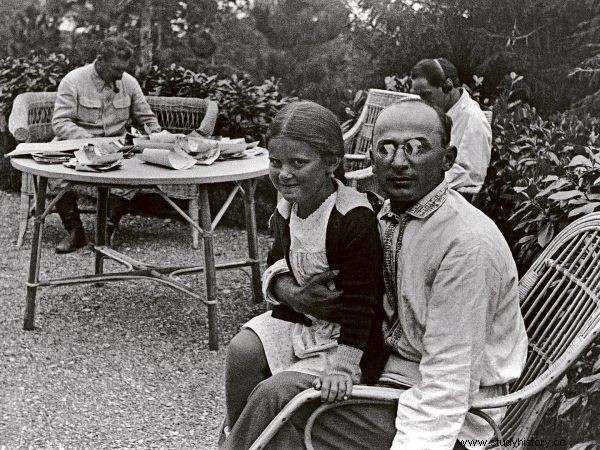
Lavrenty Beria often spent time with Stalin's family, but in the matter of Poles he made his way - against the First Secretary. The photo shows the head of the NKVD holding Svetlana, Stalin's daughter, on his lap.
In the fall of 1941, when the Red Army was in a critical situation, Lavrenty Beria lobbied Stalin to move the Polish army to the Caucasus and allow the British to expand into the Middle East. In September, the NKVD allowed the Polish army in the USSR to move towards Uzbekistan and the Volga, even though the First Secretary did not give permission for it (read more on this).
9. It started out as an army of paupers
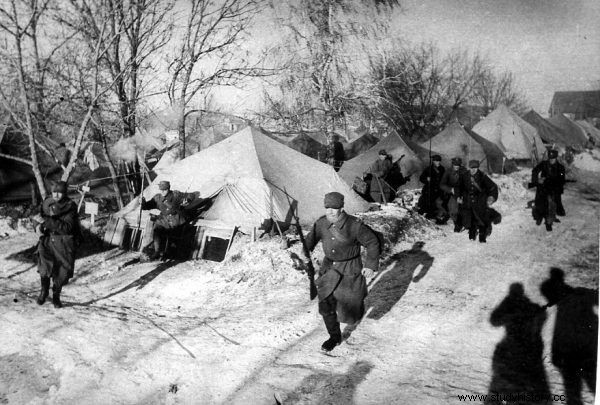
Spartan conditions of the camp of Polish soldiers in Totskoye in the winter of 1941.
Candidates for the Polish army presented a picture of poverty and despair. Destroyed by many months of work in inhumane conditions on the territory of the Soviet Union, malnourished and lousy, they were better suited to a hospital than to the Polish army. The conditions in the military camps also left a lot to be desired. For example, until the beginning of November 1941, about 60% of soldiers did not have shoes, so soldiers took turns wearing shoes (read more on this topic).
8. There were times when native Poles were… a minority in it!

Among the Polish citizens deported deep into the USSR by the Soviets there were, among others 70 thousand Jews and 45 thousand. Belarusians and Ukrainians. Many of them later ended up in Anders' army (part of our infographic on the victims of the Soviet occupation).
The provisions of the Sikorski-Majski Agreement and the so-called the amnesty of August 12, 1941 and the military agreement of August 14, 1941, did not contain any nationality restrictions. This resulted in a massive influx of representatives of national minorities living in the Second Polish Republic to the Polish army. During the first days of forming Polish units, non-Poles made up more than half of the total soldiers (read more about this).
7. She closed her eyes to mass desertions
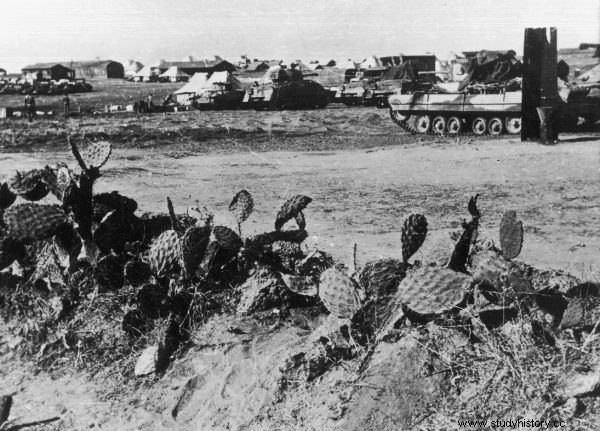
After reaching Palestine, the desertions of Orthodox soldiers became a problem for the 2nd Corps. The command, however, had no intention of pursuing them. The photo shows the 6th Armored Regiment of Lviv Children in Palestine.
The scale of the desertion of Jews from the Polish army during their stay in Palestine was impressive:over 3,000 soldiers left its ranks. Everything indicates that the desertions of soldiers of Jewish origin took place with the knowledge and consent of the Polish command. The attitude to deserters among our officers was unanimous:if the loyalty of these refugees is on the side of Israel, then let them go to found their own state (read more on this).
6. She knew how to pick up on a teddy bear
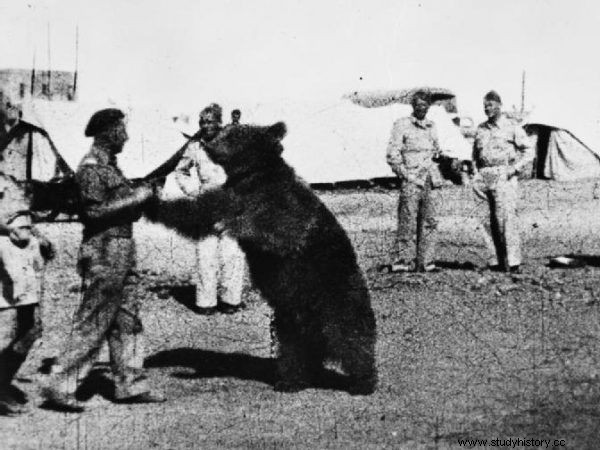
Wojtek's favorite sport was wrestling with Polish soldiers. But he also liked to help them out in a specific way…
The favorite trick of the famous Wojtek bear was to swim under the water to groups of bathers of women and unexpectedly emerging among them. This trick always caused panic. Poles saw the teddy bear's passion as an excellent way to socialize with local girls. Because how better to start a pickup than with the heroic rescue of the lady from oppression? (read more about this).
5. She had a trained commando group
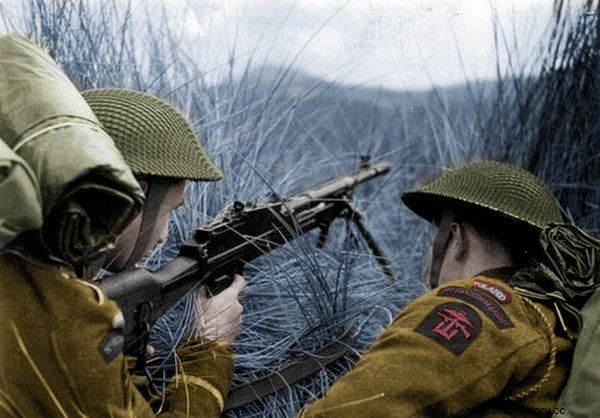
Polish commandos during exercises in Scotland in 1943.
The Polish Commando Company was formed in August 1942 by order of Władysław Sikorski from Polish soldiers residing in Western Europe. She underwent training at the Special Forces Training Center in Achnacarry, Scotland. In September 1943, Polish commandos were transferred to Algeria, and in April 1944 they joined the Anders' Army, doing them numerous favors (read more on this).
4. The civilians accompanying her ended up near Kilimanjaro
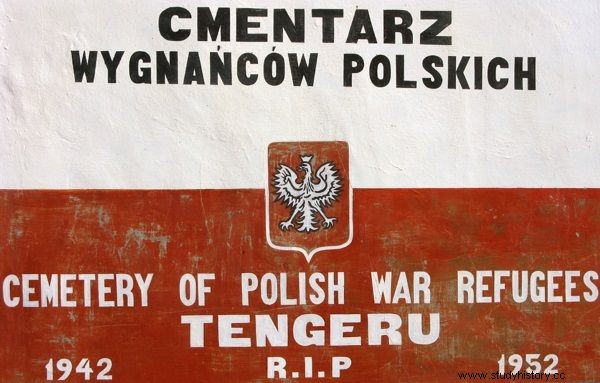
A plaque on the wall of the Polish cemetery in Tengeru.
There were many civilians among Poles fleeing the USSR. The British sent them to various provinces of their Empire. Nearly twenty thousand refugees ended up in the Black Continent. The largest Polish settlement in Africa was Tengeru, located at the foot of Mount Meru, whose top is lost in the clouds. Kilimanjaro, with its famous snow-capped peak, is perfectly visible from there (read more about it).
3. At Monte Cassino she had an evacuation relay
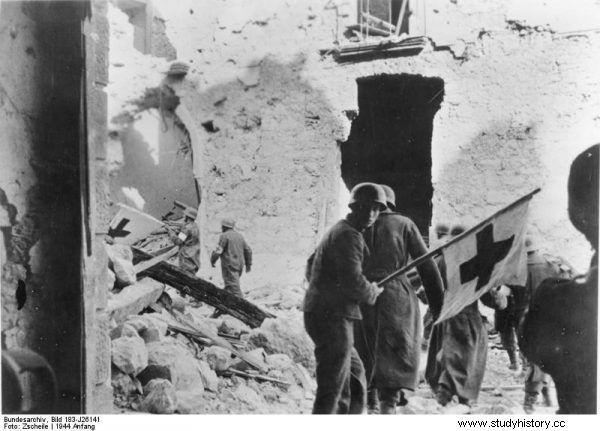
The rescue operations at Monte Cassino were not made easier by the fact that the Germans did not respect the sign of the Red Cross ...
The difference in height between the dressing point where the Polish wounded at Monte Cassino were initially taken care of and the place of their evacuation was 400 meters, and the length of the route, heavily shelled, was 2,200 meters. 180 stretchers were designated for the evacuation of the wounded in this section. They were placed in bunkers every 150 meters. The wounded were moved in stages from one station to another, replacing only the loaded stretcher with an empty one. Poles called this evacuation system a relay race (read more about it).
2. They were able to inflict on the Germans four times more losses than their own
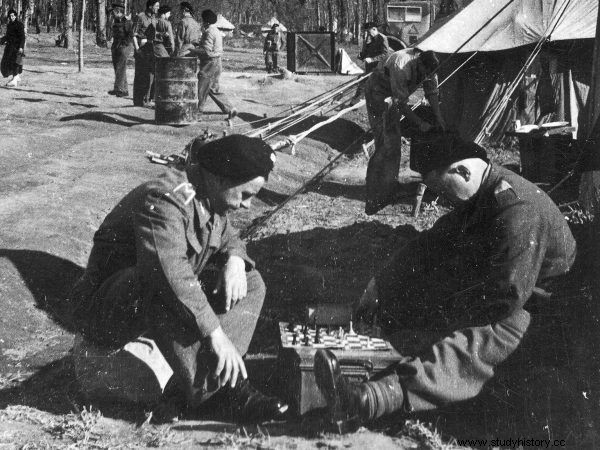
The soldiers of the 2nd Armored Brigade took advantage of the break in the fierce fighting.
During the successful 12-day battles for Bologna in April 1945, the 2nd Polish Corps suffered heavy losses:234 soldiers were killed, 1,228 were wounded and 7 missing. The Polish armed forces, however, took bloody retaliation against the Germans in this operation. 1,349 prisoners were taken prisoner and over 6,500 enemy soldiers were eliminated from the fight - killed and wounded (read more on this).
1. She wanted to free Poland from Stalin's hands
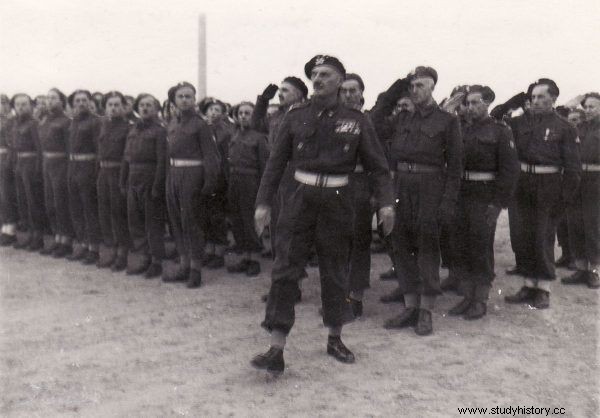
Władysław Anders during the inspection of the Polish Gymnasium in Casarano, Italy, on June 2, 1946. And he could have already been in Poland then…
On July 1, 1945, the Allied soldiers were to attack Poland as part of the operation "Unithinkable" and free it from Soviet occupation . Units of the Polish Armed Forces in the West, consisting of thousands of soldiers, commanded by General Władysław Anders, were to take part in the offensive. His soldiers were ready to go to the rescue of occupied Poland, no matter who turned out to be the occupier (read more about this).
